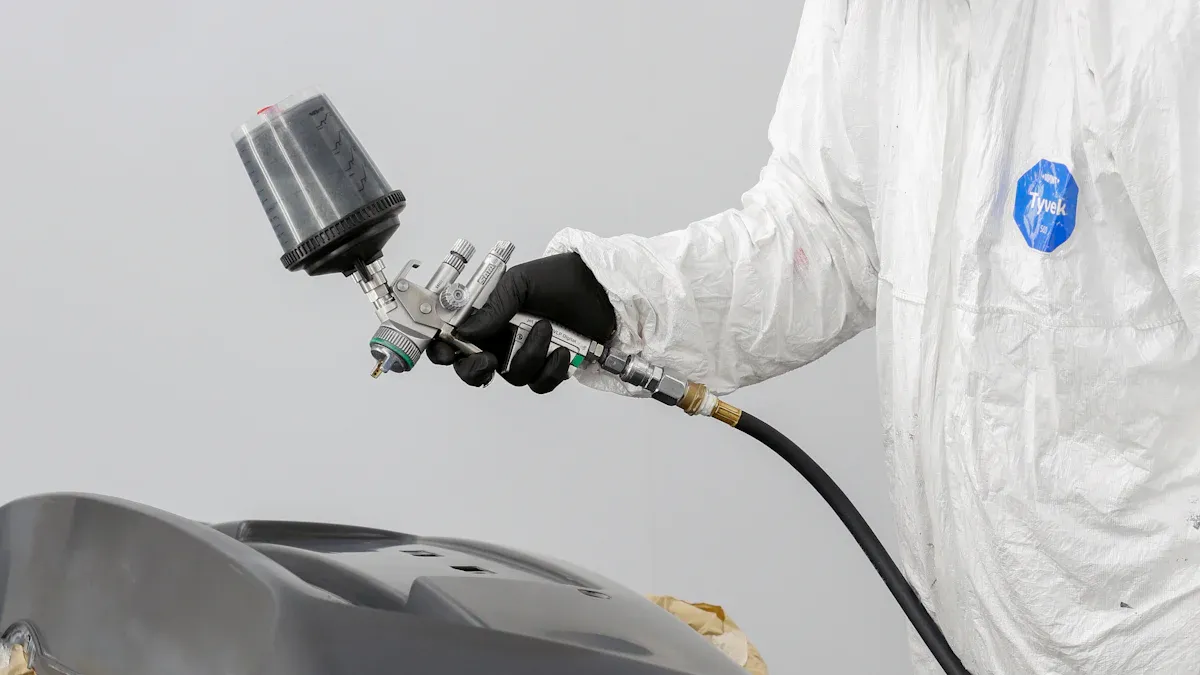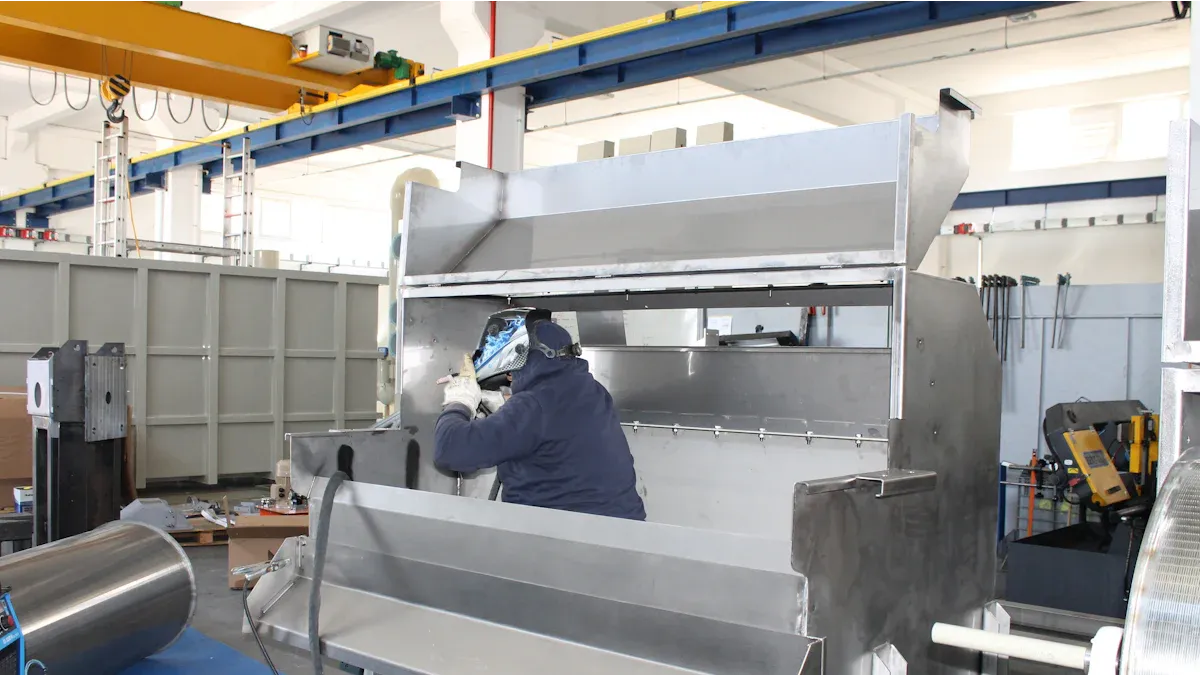
SiC coating technology revolutionizes material performance in harsh environments. Engineers rely on SIC COATING to shield surfaces from heat and wear. Both CVD SIC COATING and TAC COATING offer robust protective barriers across various industries. Additionally, CVD TAC COATING and SIC COATING contribute to extending equipment lifespan and enhancing functionality.
Key Takeaways
- SiC coating protects surfaces from heat, wear, and chemicals, making machines and parts last longer in tough conditions.
- Advanced methods like CVD and PVD help apply strong, even SiC coatings that improve performance in electronics, aerospace, and energy industries.
- SiC coating boosts safety, efficiency, and durability across many fields, helping industries build better and more reliable products.
Evolution of SiC Coating: Key Milestones and Innovations

Early Discoveries and Industrialization of SiC Coating
Scientists first discovered silicon carbide in the late 19th century. They noticed its hardness and resistance to heat. Early uses focused on abrasives and cutting tools. As industries grew, engineers started to explore new ways to use silicon carbide. Factories needed materials that could survive high temperatures and harsh chemicals. SIC COATING became important because it protected surfaces from damage.
By the mid-20th century, companies began to use SIC COATING in more products. They applied it to machine parts, furnace components, and even some electronics. This step marked the start of industrial use. Factories saw that SIC COATING helped machines last longer and work better.
Note: Early industrialization of SIC COATING set the stage for modern high-tech applications.
Breakthroughs in Deposition Methods: CVD, PVD, and Advanced Techniques
Engineers wanted better ways to apply silicon carbide coatings. They developed new methods to make coatings stronger and more uniform. Chemical Vapor Deposition (CVD) became a popular technique. In CVD, gases react at high temperatures to form a thin layer of silicon carbide on a surface. This method creates a smooth and hard coating.
Physical Vapor Deposition (PVD) also became important. In PVD, silicon carbide forms from vapor and settles onto a surface. Both CVD and PVD allow precise control over coating thickness and quality.
| Deposition Method | Main Feature | Common Use |
|---|---|---|
| CVD | High purity, uniform | Semiconductors, optics |
| PVD | Fast, flexible | Tools, machine parts |
Newer techniques, like plasma-enhanced CVD, improved the process even more. These methods made SIC COATING suitable for advanced electronics and aerospace parts.
Overcoming Technical Challenges and Enhancing Performance
Engineers faced many challenges with SIC COATING. They needed to stop cracks from forming and make sure the coating stuck well to different materials. They also worked to control the thickness and purity of the coating.
To solve these problems, researchers tested new recipes and equipment. They changed temperatures, gas flows, and surface treatments. These efforts led to coatings that resist wear, heat, and chemicals even better.
- Improved adhesion keeps coatings from peeling.
- Better purity means fewer defects in electronics.
- Thicker coatings protect parts in extreme environments.
Today, SIC COATING helps industries build safer, longer-lasting products. It plays a key role in making engines, reactors, and chips more reliable.
SiC Coating in Industry: Properties, Applications, and Impact

Unique Properties and Advantages of SiC Coating
Silicon carbide coatings stand out because of their special properties. These coatings show high hardness, which helps protect surfaces from scratches and wear. They also resist heat very well. Many industries use SIC COATING to keep equipment safe in hot environments. The coating does not react easily with chemicals, so it works well in places with strong acids or gases.
Some key advantages include:
- High thermal stability
- Excellent resistance to corrosion
- Strong protection against abrasion
- Long-lasting performance
Tip: Engineers often choose SIC COATING for parts that face extreme conditions. This choice helps reduce maintenance and replacement costs.
Preparation Techniques and Process Innovations
Manufacturers use several methods to apply silicon carbide coatings. Chemical Vapor Deposition (CVD) remains the most common. In this process, gases react at high temperatures to form a thin, even layer on the surface. Physical Vapor Deposition (PVD) offers another way to create coatings, using vaporized material that settles onto the part.
Recent innovations have improved these methods. Plasma-enhanced CVD uses plasma to help the reaction happen at lower temperatures. This change allows coating of materials that cannot handle much heat. Atomic Layer Deposition (ALD) gives even more control, letting engineers build up the coating one layer at a time.
| Technique | Main Benefit | Typical Use |
|---|---|---|
| CVD | Uniform, pure coatings | Electronics, optics |
| PVD | Fast, flexible application | Tools, machine parts |
| Plasma-enhanced CVD | Lower temperature process | Sensitive components |
| ALD | Precise thickness control | Advanced microchips |
These process innovations help SIC COATING meet the needs of new technologies. They also make it possible to coat complex shapes and delicate parts.
Transformative Roles in Semiconductors, Aerospace, and Energy
SIC COATING plays a big role in many industries. In the semiconductor field, it protects wafers and tools from damage during chip production. The coating keeps surfaces clean and free from defects, which leads to better electronic devices.
In aerospace, engineers use silicon carbide coatings to shield engine parts from heat and wear. The coating helps turbines and nozzles last longer, even in the hottest parts of a jet engine. This protection improves safety and reduces the need for repairs.
The energy sector also benefits from these coatings. Power plants use SIC COATING on parts that face high temperatures and corrosive gases. Solar panel makers use it to protect surfaces and boost efficiency.
- Semiconductors: Cleaner production, fewer defects
- Aerospace: Longer part life, better safety
- Energy: Improved durability, higher efficiency
Note: The use of silicon carbide coatings has helped these industries reach new levels of performance and reliability.
SIC COATING continues to change how industries protect and improve equipment. Researchers develop new methods to make coatings stronger and more reliable. Many experts believe this technology will help future factories work better and last longer. Companies see real benefits in safety, efficiency, and innovation.
FAQ
What makes SiC coating different from other coatings?
Silicon carbide coating stands out for its hardness and heat resistance. Many industries use it to protect equipment in extreme environments.
How do engineers apply SiC coating to surfaces?
Engineers often use Chemical Vapor Deposition (CVD) or Physical Vapor Deposition (PVD). These methods create a thin, even layer on many types of parts.
Can SiC coating improve energy efficiency?
Yes. SiC coating helps machines run cooler and last longer. This improvement can lower energy use and reduce maintenance needs.


